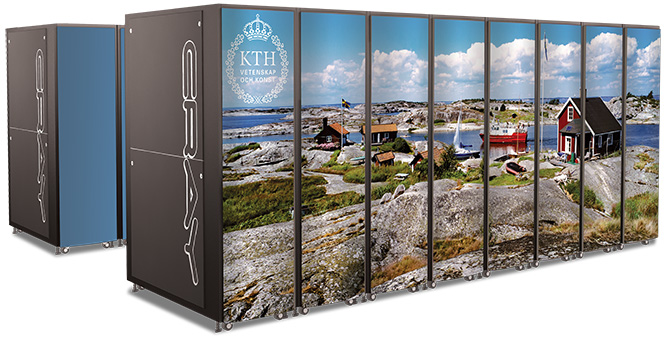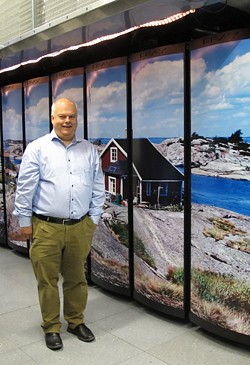Press release: KTH supercomputer cuts operating costs by millions
For information in Swedish, see the .

The cold climate in Sweden is one of the main reasons that Facebook set up its first data centre outside the U.S. near Luleå in northern Sweden. However Facebook essentially wastes all the heat that is produced by the supercomputers in their data centre. In contrast, the PDC Center for High Performance Computing at the Royal Institute of Technology (KTH) in Stockholm uses the excess heat from the supercomputer Lindgren to heat one of the buildings at KTH.
The annual savings from re-using the heat at PDC are estimated to be about 390,000 SEK for district cooling and 290,000 SEK for district heating for a normal year. However the total annual savings of around 680 000 SEK are expected to grow rapidly due to increases in energy prices.
It all started as a pilot project at KTH. Gert Svensson, Deputy Director at the PDC Center for High Performance Computing at KTH, saw that the annual energy bill for the new supercomputer Lindgren would be much higher than that for the previous supercomputer. So, Gert and others at the KTH decided to try to do something locally in cooperation with the company that owns the buildings at KTH, “Akademiska hus”.

“We take the hot air from Lindgren and run it through industrial heat exchangers that heat the water up to 35 °C. This heated water is then piped to one of the other buildings at the KTH campus in Stockholm to heat the premises there,” says Gert Svensson.
Previously PDC had bought all its cooling and heating from the energy company Fortum. Now some of this can be produced locally by heat re-use.
Gert pointed out that “There are a lot of great features to the system. For example we used the existing district cooling circuit, so we did not need to lay any new pipes between the buildings. Moreover, we were able to design the system without using any extra heat pumps that would have drawn additional energy.”
He adds that, in addition to the economic benefits, this heat re-use approach also helps save the environment by taking advantage of the heat energy that is produced by the supercomputers, instead of just wasting it.
“This is an important issue. We really need to consider the assumption that it is more economical to locate big computer centres in very cold areas where there is little need for additional heating (as Facebook has done in Luleå). It might actually be better to build large computer centres in the cities and take advantage of the excess heat,” says Gert Svensson.
For more information, contact Gert Svensson at +46 8 790 78 84, +46 70- 346 83 90 or gert@pdc.kth.se .
For full details about the project, see A Heat Re-Use System for the Cray XE6 and Future Systems at PDC, KTH (pdf 1.1 MB) .
